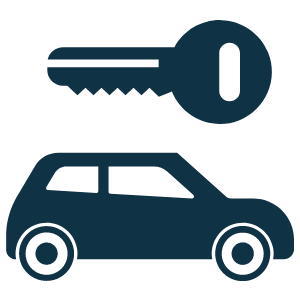Vehicle Lease and Buying Guide
Vehicle Lease and Buying Guide
The Definitive Guide

This is a vehicle lease and buying guide.
In this guide, you will learn.
- How to set a budget
- How to decide between car lease or buying
- What to do and say at the dealership
- Negotiation tips
- How to correspond with the dealership
- Common new car buying mistakes
So if you want to feel confident about getting a good car deal, you’ll love this guide. The market continues to change, although some factors remain the same, it’s important we talk in the context of a vehicle lease or car buying in 2025.
Let’s get started.

Chapter 1
Setting a Budget

This remains to be true, due to many factors, but car buyers continue to pay more than they should and don’t even know it. If you’re going to make a purchase, as large as a car purchase, then you need to start with a budget.
Since you’re here, you probably have at least a sneaking suspicion that you’ve paid too much in the past, you’ve heard others’ horror stories or you’re just smart enough to know there’s much more for you to learn. And knowledge, as you know, friend, is POWER.
I can’t tell you what your budget should be, but I can help you determine what TYPES of vehicles fit inside your budget.
It’s a frequent practice for people to walk the lot, test-drive vehicles, run credit apps, and then hours later learn that the car they want is waaay out of their budget.
DO NOT DO THAT.
Determine the best vehicle to fit your budget and that is where you should START.
Here are the main things people forget when setting a budget.
- The sale price is not the total cost of the vehicle. Don’t forget; there are taxes, dealer fees, negative equity and any other fees the dealer will charge.
- Financing is just as important as the sale price. A 1% increase on a 6 year loan with a balance of $40,000 is $17.40. That’s over $1200 for the term of the loan.
- Paying cash is not always best. Sometimes dealerships will discount the car if they expect to make money on the financing. Most loans have no prepayment penalty. What stops you from financing then paying off the loan when you get the first bill?
- Zero percent financing is not always the best option. Many times you give up rebates or discounts when you take the 0% financing. Just make sure you’re aware of what you are giving up to get that interest rate. Zero percent or even 1.9% sounds good but not if you have to give up $4000 in discounts and especially if you plan to pay the loan off within three years.
- Your trade-in works as a down payment only if it is worth more than what you owe on it. If you owe more than what it’s worth then you have to add that into the new loan. Common sense, right?
When setting a budget you need to understand there are going to be many factors involved other than the sale price. You can play with the payment calculator I use to calculate payments here. If you tell a salesman you’re expecting to pay $300/month for a $40,000 vehicle with no money down you will look like a moron. You need to know how much the vehicle you want is going to cost.
**Use this checklist for car budget considerations, I wrote in addition to this car lease and buying guide to help with setting your budget.

Chapter 2
Lease vs Buying

Here’s a familiar situation for car lease versus car buying in 2025.
A customer is upset upon learning their trade-in is not worth what they owe. They would be rolling in negative equity into a new vehicle and then be in a worse position three years later (also about the time they will want to trade it in again).
Here’s why I might advocate for leasing (in the proper situation). It can give more options. When you buy a vehicle, you are stuck with it for the length of the loan (if you have financed it). Leases are for a set amount of time and at the end of the lease, you have the option to buy the vehicle if you really like it or you can turn it in if you want something new.
Either way, you are paying for the vehicle’s depreciation

Lease or Buying Examples
BUYING EXAMPLE:
You are interested in a $20,000 vehicle after taxes have been calculated and with an interest rate of say, 3%. Your payment would be around $400 for five years.
LEASING EXAMPLE:
The same vehicle leases for $200/month. At the end of five years, leasing this vehicle for $200/month less than the cost to buy it has saved $12,000 dollars.
Get your calculator out:
$200 monthly payment x 60 months =$12,000
That $20,000 vehicle at the end of five years is going to be worth more or less than $12,000 dollars and you should ask yourself: how long do I plan on driving the vehicle after it is paid off?
This example assumes a $200 lease payment on a $20,000 vehicle. This is a no-brainer. I would certainly suggest leasing in this scenario because at the end of the lease you would still have the option to buy the vehicle. If at the end of the three-year lease, you’ve paid $7,200 to drive it and your purchase option on that vehicle might be $13,000, for example.
You could take the $7,200 you’ve saved and finance the difference to buy the vehicle if you want. Deciding whether to lease or buy really depends on your car buying habits and many other factors.
Keep in mind that some vehicles lease better than others. Typically, if a vehicle holds its value better, it will lease better because you only pay for the depreciation. You could put the $7,200 dollars you saved and finance the difference then buy the vehicle if you want to.
Here’s why: With a lease, the leasing company (typically the manufacturer’s finance company) estimates the value of the vehicle at the end of the lease and you pay the difference between the sale price and the estimated value of the vehicle at lease end.
In our example, the finance company is assuming that vehicle will be worth around $12,800 at the end of the lease.
Here’s how to get that number:
$20,000 (Sale price) minus 36 (payments made on lease) multiplied by $200 (payment amount) = $7,200
$20,000 – $7200 = $12,800.
The Money Factor
The money factor is also very important in a lease deal. The money factor works like an interest rate. That’s why your option to buy this vehicle in this scenario would be higher than $12,800.
Your next question is likely: How do I know if the vehicle I want is a good lease deal?
To determine this, you’ll have to ask the dealership to show you your options both ways. They aren’t going to volunteer this information.
Typically, your payment will be less on a lease than on a purchase unless you are doing an ultra-high mile lease of say… 20,000 miles per year. The only way to know if you should lease or buy a vehicle is to see the difference in writing and then decide.
If the vehicle you want has a lease payment of 1% or lower of the sale price with no cash due at signing, that’s a pretty good lease deal.
Keep in mind, the vehicles that hold their value the best typically lease the best because you only pay for the estimated depreciation of the vehicle.
One sure way car buyers get taken advantage of in a lease is by focusing on payment alone. Understand that every $1,000 you put down on a 24-month lease will lower your payment by around $41.00 per month ($100/24 = $41.66). That’s why you always see commercials for really low lease payments.
If you had your magnifying glasses on you would see and realize a huge down payment is required and it doesn’t include taxes or the first payment.
When negotiating a lease, always make sure the numbers are based on the same amount of cash needed at signing. Validate that the dealerships are including all taxes and fees and first payments including the exact amount due at signing.
I typically have them figure a $0 cash due at signing a lease to make it easy. Then you can figure how much cash you will need to put down to reach your desired payment.
Lastly, I do not typically recommend putting money down on a lease because it’s a pay now or pay later proposition.
I’d suggest keeping your money in an account earning interest instead of giving it to the lender so they can earn interest.
That’s up to you, but you do not need to put any cash down on a lease if you have great credit.
Chapter 3
Dealership Visits

You know your budget and you have decided whether to lease or buy. Now you have to find the right vehicle for you. If you have a plan prior to visiting the dealership, you can make your own rules and be in control.
Take a look at the inventory of a local dealership online. Then set up a test drive of each vehicle you are considering in order to narrow it down. You should already know how much the vehicle is going to cost, so there is no reason to discuss numbers with the car salesman until you have decided on the exact vehicle you want to buy.
You need to know the approximate cost of a vehicle you want to purchase before test driving. This is imperative. Know your budget and know the approximate cost of the vehicle.
In fact, I highly stress you should never step foot in a dealership if you don’t need to test drive. All negotiations and fact-finding should not be done on the dealership turf.

What Not to Say to a Salesman
While on test drives there are particular questions you may be asked. As a rule, the person who talks the least in a negotiation is more likely to win. I explain in detail how you should handle the most common questions.
Be sure not to get too excited on test drives when you like a vehicle because you still need to contact multiple dealerships to find the best deal on the exact vehicle you want.
Here are a few things NOT to say when new car buying in 2021:
1. I want my payment to be $XXX.
Never tell a salesman how much you want in a payment.
2. I need to have (moon roof, navigation, etc).
Even if there is a specific feature you cannot live without, do not share that desire until later in the negotiations.
3. I love this color!
Don’t share your color requirements. Deal with that later.
Chapter 4
Negotiation Basics

With the exact vehicle you want, it’s time to make a deal.
Locate at least five vehicles similarly equipped and with the same MSRP at different dealerships. Tell them you’ve driven the vehicle and when asked if you want to come in, tell them you know what you want and want to know the cost of the vehicle before you come in.
If they can send you a proposal in writing, you will do a credit app on the website and then come in to take delivery of the vehicle, if you come to an agreement on price.
While searching for vehicles be open to different colors (even if you aren’t) if inventory is low. This ensures you have multiple quotes on similar vehicles.
You then use that information when negotiating the actual color you do want. You have to be sure the MSRP of the vehicle you are going to get a quote on is similar to the MSRP of the vehicle you actually want. If the dealership doesn’t have the exact vehicle you want, ask them if they can find one for you.
You usually get a better price on a vehicle in their inventory. Dealers will offer to locate one and if they do, ask them to send you the window sticker of the vehicle so you can find out where it is located.
Here’s a secret: If you can get the window sticker of the exact vehicle you want, you can do a Google search to find out where it is located. Make a call to that dealership and ask for a proposal.
Tell each dealership that you are getting quotes from other dealerships and you will buy from whoever gives the best deal.
You will find that some salesmen will be hesitant to give you a proposal in writing. Tell them that you have a pre-approval letter from your bank and will only consider offers that you receive in writing. Dealerships that refuse to provide proposals in writing are not dealerships I prefer to work with.
They often say they cannot give you a payment until you do a credit application. This is of course because they want you to use their financing. You should tell them to assume excellent credit and that if you do not get approved for their best rate, you can always use your own financing.
You want a good faith estimate and if you want to accept their deal you will do a credit application on their website when you want to move forward.

Requesting Proposals
Request that the dealerships provide the following in their proposals. These are the numbers you need and an explanation of what they mean.
This is the sticker price or basically a fabricated number by the manufacturer. This number does not reflect the value of the vehicle because in most cases you will never pay this number. This number is only a starting point for your negotiations. If you’re comparing vehicles with the same MSRP, then the bottom line numbers should be the same. If you are comparing a vehicle with a higher MSRP and the bottom line number is the same, then the vehicle with the higher MSRP is a better deal. MSRP is only a starting point. Get proposals on vehicles with a similar MSRP.
This will tell you who is providing you the best deal, assuming all rebates (if offered) are the same. The difference between the MSRP and the cash price is how dealerships profit. If a dealership sells you a vehicle at invoice, the invoice should match this number and all the rebates and incentives should come off this number.
This is the price after all rebates and incentives. This is the final price before adding in all the taxes and other fees.
This is what they will give you for your trade in.
This is the sale price minus trade in value.
This is a profit center. This really should be included in the sale price but dealerships always charge one. Keep an eye out for this number.
Typically calculated based on where you live.
I like to call this the only number that matters.
This is the loan amount or the cash amount needed to buy the vehicle. If you focus on this number when negotiating a car deal, you are doing it right. For example: Vehicle A and Vehicle B have the same MSRP and same interest rate but Vehicle A has a Total Due $500 less than Vehicle B— Vehicle A is the better deal.
This is the amount of interest you will be charged on a loan.
A difference of 2% on a $20,000 loan is $1,240 on a 6 year loan. If you are not negotiating the interest rate of your loan you are probably paying too much. The shorter the term, the lower the interest rate.
Dealership Correspondence
The old way of physically visiting the dealership and sitting at sales desks to negotiate a deal is long gone. They still want you to do it, but consumers are finding out there is a better way.
We are teaching people that car buying in 2025 can and should be shaped by the consumer. The better way is by buying calling and getting a proposal over the phone.
Actually knowing the WHOLE deal before ever stepping foot inside the dealership.
Savvy salesmen will be happy to personally text or email you in order to gain your business. The best way to initiate correspondence with a dealership is to call them, find a high-performing salesman (they sell a lot of cars), and ask them for their mobile number to text them. Send them a link to the vehicle on their site along with your name and address so that they can prepare a proposal for you. Have them text it over.
If you are more comfortable with e-mail, that works too. Include a window sticker of a vehicle that has all of the features you want. Also, include all your trade-in information like VIN number, miles, and pictures. You may also want to include the fact that you have researched the value of your trade-in and that you know what you are expecting to receive for it. To make sure they know you are serious you can include a pre-approved offer from your bank or a screenshot of your credit karma credit score. Send all dealerships the same information.
If you live in a small town or you only have small dealerships in your area, I recommend calling the largest dealership in the closest city. Many times, the largest dealerships will offer you the best price because there are big bonuses based on volume. You will most likely get the best deals from them. You don’t have to buy from them but you will know what you should make as your offer to the dealership that actually has the vehicle you want.
You see, that’s the whole point.
There will often be a big difference in the prices from dealer A to dealer D.
When dealerships compete, you win.
Chapter 5
New Car Buying Mistakes

In order to make an informed car buying decision, you need to put in the work. Visiting one dealership and talking with one salesman and getting a quote on one vehicle will always leave you with the lingering question, “Did I get ripped off?” You have no one to blame but yourself with this strategy.
You should never ever have that question lingering if you have followed these steps. I emphasize this so much because the less time you spend at a dealership, the more time you will have to speak with other dealerships.
To know for certain you have not gotten ripped off, as most consumers worry about, or better yet if you have gotten a good deal— You need to make dealerships compete.
You need to contact multiple dealerships. This is the only way. There are no online tools or sites out there that will do this for you. If you find one that claims to, find out who their real customer is. Nine times out of ten, their customer is not you. A free site to you will often be compensated by dealerships to sell your information.
That’s not to say that some of the free car research sites out there like CarEdge, for example, cannot provide some helpful information. They can and do. However, the way that dealerships price their vehicles online, does not give you the entire cost of ownership of a vehicle. You have to contact them to get the entire deal. Don’t be misled.
If you’ve made purchases in the past and have regret, don’t beat yourself up. But just know, there is a better way and there are experts who can advise you. Experts who actually have YOUR best interest in mind.
This Vehicle Lease and Buying Guide means to prepare you and give you insight into how you may have been making mistakes in the past or to prep you for your first time purchasing a vehicle in a long while.

Bonus Chapter
Vehicle Lease and Car Buying in 2025 (and beyond)

I’ve been clear that the best way to negotiate a car deal is by not visiting the dealership.
When you enter the dealership turf, you are at a great disadvantage.
The tactics dealerships use today online are their pricing strategies. They know you are sorting your searches by price, so they will often price their cars online for much lower than what they actually intend to sell them for.
Once you get to the dealership and spend time there it’s much less likely you will want to leave and go do the same thing at another dealership. If you do and you want to, more power to you.
But the majority of us, don’t want to do that, don’t have the time to do that, and never will do that at four or five dealerships. This means you won’t make dealerships compete.
The changes in car buying in 2021 brought about good changes for the consumer experience. Dealerships pivoted to online sales and delivery. This benefits the consumer because the dealerships are providing more proposals over the phone and they are delivering vehicles to their customers’ homes, allowing consumers to shop and negotiate from home.
There’s really no reason anyone needs to visit a dealership unless they need to test drive or look at a vehicle physically. Even still, the good salespeople are ready to snap a video and walk around a vehicle or use Facetime or text you over some pictures so that you don’t have to make that extra trip in and waste either of your time.
There will always be folks who don’t have the time or just don’t want to deal with the entire car-buying process. Because of that more and more car concierge services who deal with that hassle for you, are emerging.
This speaks to the demand for consumers who want expertly negotiated car deals whether they want to learn to do it themselves or hire an expert on their behalf.
If you just don’t have the time or even the personality to follow this guide, there is still hope.
There are a growing number of independent car buying advocates who are doing the work for consumers who aren’t comfortable. We as consumers hire experts in every other industry and yet we go about car-buying, a big financial commitment, without any help.
You purchase a vehicle once every few years and you negotiate against experts who do it all day long.
This is changing beyond 2025. And you’ll see us here at YCBA leading the charge for consumers.
There is a solution for individuals who don’t want to deal with it; hire an expert.
Beyond 2025, we’ll see more and more opportunities for experts to use their skills to come alongside consumers and help them get better car deals, vehicle leases and experience less stress and anxiety with the entire process.

